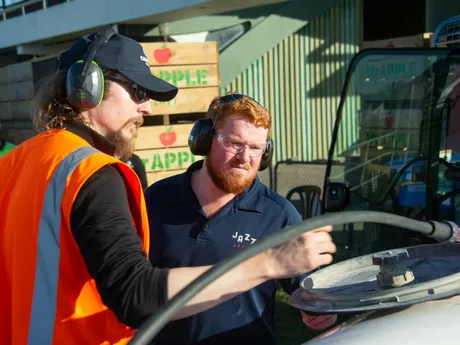HortNZ says the industry is getting on the front foot to try to address the skilled job shortage in the country's horticulture sector, following the launch of the Food and Fibre Skills Action Plan in October.
Despite the horticulture industry experiencing year on year growth, CEO Mike Chapman says the headline is that the number of learners studying agriculture and horticulture has dropped from 67,362 in 2013 to 45,557 in 2018.
"That's skills across the board, from those who pick and pack, right through the sector," he said. "That's nothing new anywhere in the world, but we are suffering a shortage of skilled labour. If you are going to have to plant more fruit and vegetables to feed the nation, you are going to have to have more workers for the orchards and gardens. It is a big concern for us."

HortNZ is now working with the different produce sector industry groups, including apples, kiwifruit, avocados, vegetables and regional grower groups to address the imbalance, which involves attracting people to careers in horticulture in a real team effort.
"We want to see things like courses, degrees, diplomas and short courses that will upskill people to the necessary levels," Mr Chapman said. "To do that we working with the industry groups to create a network of five people. These people will be employed to work with young people in the regions as well as people currently not working. First to attract them to the industry, and then give them a pathway in terms of upskilling and then linked to employers for jobs in horticulture."
The Action Plan identifies four key opportunities to build a strong food and fibre workforce; Knowledge, Attraction, Education and Employment. It addresses common food and fibre workforce challenges by complementing or building on existing initiatives.
Mr Chapman says there is also a position at Massey University, attracting students to their specialised Horticulture Degree, and helping them get placements at fruit and vegetable companies in their holidays, so they get experience in the practical side with a pathway to future employment.
The Action Plan is also linked to the Reform of Vocational Education (ROVE), which Mr Chapman says has the potential to deliver much better outcomes for our sector and those who work in it. But the key is for every employer to make the changes necessary to not only to attract, but also to retain, skilled staff.
"The reform’s goal is to tailor the delivery to individual learners and industry needs, and get rid of duplication in the system," he said. "Also, to ensure that the funding ends up at the learning end of the business. So, it's an administrative restructure at one level, but also bringing the industry employers and learners into the mix in a lot stronger way. The country is now going through the process of getting the review in place, and there is legislation before parliament. The first changes will be made from 1 April 2020."
In the meantime, HortNZ says it is doing all it can to make sure that learners are not being disadvantaged by the changes in structure, regardless of who is doing the teaching. After the transition, Mr Chapman is hoping to see more short and innovative courses available at flexible times that suit each of the students.
 For more information
For more information
Mike Chapman
HortNZ
Phone: +64 4 472 3795
nfo@hortnz.co.nz
www.hortnz.co.nz
